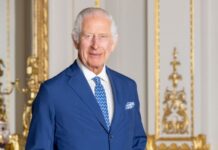Modesty and privacy in Hijab are Islamic concepts, but hey are also expressed in multi-ethnic and multi-religious countries. Such as, in Orthodox Christianity or Catholicism, women wear mitres, a distinctive headdress of bishops.
A nun wears her headdress as a symbol of purity, the sign of her affiliation to the church, her submission to God, modesty, and, to a certain point, her separation from the rest of society. Among Hindus, head coverings are worn by most women who keep the saree ‘pallu’ on their heads. In Judaism, the sheitel is a special wig, and headscarves, apart from yarmulke, are used by females.
However, apparently, the biggest challenge for Muslim women is wearing the hijab that covers most of the body in publicas it correspondingly affects their professional and way of life as well. The verse quoted previously referred to gives a very good reason; it says: “This is more appropriate so that they may be known [as Muslim women] and thus not be harassed [or molested].” (33:59). Men, whether they confess it or not, are emperors lustful and desirous.
By superposing a specific faith, several female veil singers, girls in sports wearing the veil, women news reporters, have been trolled on social media and have made headlines in the recent past and have been targeted for choosing to wear a hijab. Recently, a barrage of questions and comments was thrown at this Pakistani rapper Eva B on hijab while hailing the music show on which she appeared.
Despite that, deciding to wear the hijab must be out of a woman’s free will. Whilst windy weather, the scarf can flutter. It can reveal your neck or your hair. To tidy up the whole thing and give a modern appearance is to set an example to Muslim girls and women of the time who have been made to feel inferior by the authorization of society
She is called an up-and-coming niqab-posh rapper. A Pakistani TV host wears a burqa on live TV to protest anti-hijab comments by Pakistan’s nuclear scientist targeting women in hijab. Similarly, a backlash has been challenged in neighbouring India where Oscar-winning musician AR Rehman’s daughter was targeted and objectified as female rarest burqa singer.
Both defended themselves with the slogans of “It’s not your problem” and “It’s my choice”. Muskan Khan’s roar standing up against anti-hijab protesters as Indian Muslims captured the “brave moment” to link it with a religious movement. A sprinkling Muslim female journalists in the US media seeks to inspire in Hijab as “Representation Matters” while encountering bigoted and negative tags as the Hijabi reporter crew.
Women in France are excluded from a football field and seek to end in humiliation against the hijab in ‘sports’ campaigning using the hashtag “Les Hijabeuses” in the interest of religious neutrality. In Algeria, hijabi anchors have appeared on state TV for the first time.
Conversely, a woman from the Middle East raised her voice against the atrocities on women in the form of Sharia law forcing women to wear hijab with irrational fear and raised the slogan “Let’s Talk”. This year World Hijab Day was marked under the theme that “Hijab is our Crown, not A Crime” activities, and organized around the world to aspire to be great, disapproval of alleged continuous harassment of females in schools and workplaces for wearing hijabs, but also aimed at putting an end to such practices no matter what the challenges are and speak out when they experience any form of molestation or victimization.
For instance, during the current year in Nigeria; this is as they requested the Lagos State Government to issue a circular reminding school administrator of an appeal court’s ruling, which permits Muslim students to use hijab in schools in the state.In a succession, when the enemies of Islam were impending goodly, what does Rumi preach? Peace! Passivity! Submission!
At the cutting edge, understanding covetous and lustful desire, and linking up with men predominantly corrupts us mentally, creating more respect for hijab-wearing women and less for unmasked or the other way around. It’s not just the objectifying male gaze that humiliates or threatens women; sometimes some women need frugality from their own unbridled selves.
The feminine form – desirable, alluring, and sensuous in the sociableness apart from the privacy of the marital home – should be made to appear in the public sphere. In a staunchly secular nation, first lady Emine Erdogan was strengthening solidarity, empowerment, and promoting peace in a headscarf. Her headscarf looked more like a slick headwrap in appearance, which covered both hair and neck, giving women a neat and formal look.
Secularism is to shun the western style of dressing, embracing headscarves, family values, wearing makeup, and enjoying contemporary social activities for ‘the true path’ following Islamic teachings.
In most South Asian countries like Pakistan, Bangladesh, Nepal, and India the headscarf doesn’t have a very modern image. It also led conservative activism not to go in one of the meetings, even those which are only for women, with polished nails as they face criticism from other attendees for make-up and looking like a movie star. The criticism forces a woman to think about her outfit, consistently indulging her to feel slightly embarrassed and to make inquiries into Islam and its culture to fully embrace a religious life.
Despite that, deciding to wear the hijab must be out of a woman’s free will. Whilst windy weather, the scarf can flutter. It can reveal your neck or your hair. To tidy up the whole thing and give a modern appearance is to set an example to Muslim girls and women of the time who have been made to feel inferior by the authorization of society. These intersecting issues, a literary and cultural fallen veil, was understood as a device that kept women apart from men and proved that the laws do not have anything to do with the religion to boot, than hijab-wearers respect women who wear little.
Early enough as far back as 1965, I loved the way [American actress] Audrey Hepburn covered her hair with a scarf. Recently, the rising tide of Islamophobia has been heard by the UN which has adopted a landmark resolution introduced designating March 15 as International Day against Islamophobia as a way forward that presents itself as being a step in the right direction of “patience,” “balance,” and “tolerance.” This will conquer us, not to give up from our headscarves but to obliterate the issue of universality whose potential carries the power to silence the weak,cultural, and religious differences for the sake of an idealized form of harmony between cultures.





















